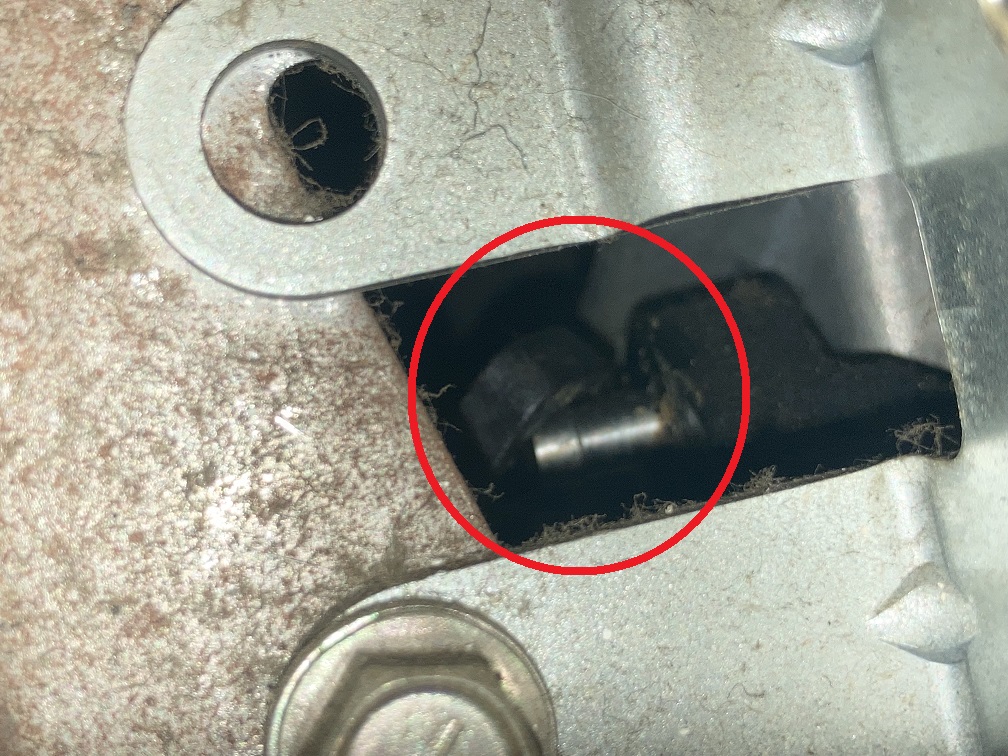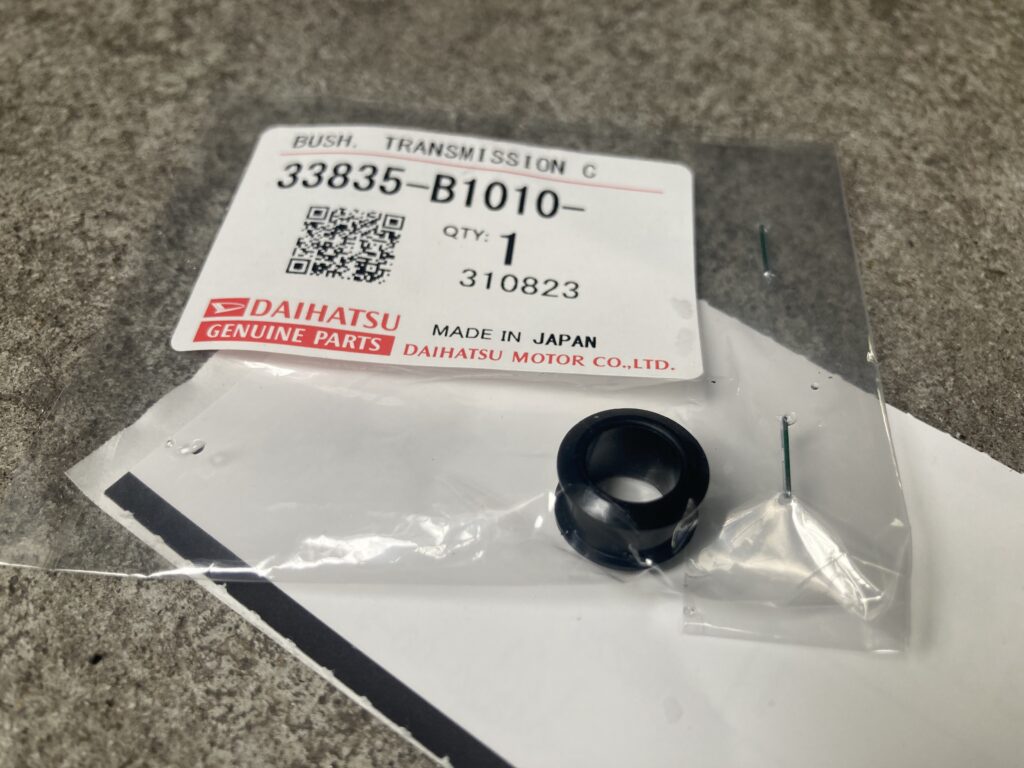Certain Daihatsu models have been experiencing cases where shift operation suddenly becomes impossible.
The issue stems from the deterioration and disintegration of the plastic component connecting the shift lever to the transmission wire cable on the shift lever side, resulting in a physical disconnection.
Specifications: 2007 model, DBA-L175S, KF-VE engine, 4AT, odometer reading 160,000 km
I previously encountered a case where a customer experienced shift operation failure in their home parking lot (with about 90,000 km on the odometer).
After having the wire replaced at a nearby repair shop, the complex wire cable routing was done improperly, leading to difficulties in shift operation. I eventually had to rectify the situation.
The disconnection occurs at what’s known as the “linkage.” Similar structures often use plastic or rubber internally to improve operability. Even if these materials degrade and the fit becomes loose, compromising precision, many designs incorporate metal components like cotter pins and washers to prevent complete linkage detachment.
However, in this case, the linkage part simply consists of plastic mated to a metal protrusion on the shift lever side. While a ball joint-like shape would be more reassuring, this design only has a slight step on the shaft to prevent slipping. Although this reduces the number of parts and simplifies assembly, it’s a dangerous structure that relies too heavily on plastic, which is inevitably subject to degradation and wear. I can’t help but think this is a case that calls for a recall and improvement repair.
I believe the concentration of issues in specific models is due to differences in wire routing, which affects the stress on the failure-prone part.
While it’s now possible to obtain only the plastic component for replacement… (Was this not available before?)


Leave a Reply